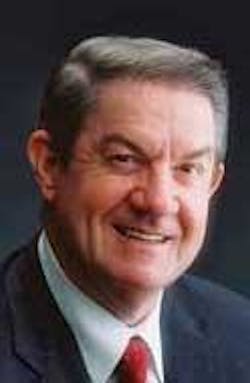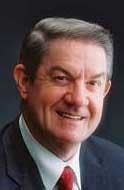Interview with Dr. Jimmy Eubank: AACD Lifetime Achievement Award winner
by Jeffrey B. Dalin, DDS, FACD, FAGD, FICDE
For more on this topic, go to www.dentaleconomics.com and search using the following key words: American Academy of Cosmetic Dentistry, Jimmy Eubank, esthetics, Dr. Jeff Dalin.
Dr. Dalin: Congratulations, Dr. Eubank, on winning the American Academy of Cosmetic Dentistry's Lifetime Achievement Award at its recent annual meeting! What an honor! I understand that this is only the third time this award has been given.
Dr. Eubank: I am humbled and honored by the award. We all stand on the shoulders of those who have gone before us, and have shared with us their ideas and innovations that help us achieve another level of excellence. The credit should go to the many mentors, teachers, and supporters I have had in my career. I am especially honored based on the strength of the past two recipients, Drs. Frank Spear and Buddy Mopper.
Dr. Dalin: In researching your career, I learned that you are an accredited laboratory technician, as well as an accredited dentist. How do you think these dual roles help set you apart?
Dr. Eubank: I pursued doing lab work myself because I was disappointed in the quality of restorations I was receiving from the labs I worked with. I had always assumed that the problem was with the lab. So I started doing ceramics in 1987, and have studied with the best ceramists in the world. I discovered that the problem is not always with the lab.
The dentist can do several things to make it easier for the lab to achieve an excellent result, just as the lab can do several things to make the dentist's job easier and better. The problem is that most dentists are unaware of what goes on in the lab and what their options are. Meanwhile, the technician doesn't fully understand the dentist's functional, esthetic, and biologic limitations.
Doing my lab work has taught me to see and understand both sides of this partnership, so now I know what each partner can do to get a superior result. Before I did this, I mistakenly thought the solution was to find a better lab. The real solution, though, is good communication, in which the doctor and technician treat each other as equal partners and are open to do whatever is necessary to get a better result.
They educate each other and take courses together. I have been told that I have a dentist's hands and a technician's heart; I consider that a compliment. In general, I do not think technicians get the credit and respect that they deserve.
Dr. Dalin: I love your commitment to continuing education. What postgraduate programs do you work with, and how important is it for our readers to be lifelong learners?
Dr. Eubank: Our profession is dynamic, and we are making constant improvements to materials and techniques. We must be continuous students to stay abreast of new developments and we must develop our skills so we can better serve patients.
One of the best ways to learn is to take postgraduate courses. Lecture-only formats are good, but in order to learn new techniques and systems to the level that you can implement in your practice, you must take hands-on courses.
The courses I teach at the Eubank Teaching Institute communicate what I do in my practice every day. We have specially designed hands-on exercises to help clinicians implement the skills they learn from our courses. You complete the exercise, and you have the skill.
Our commitment is to help each participant implement the systems in his or her practice. If a participant has a problem or question after the course, we are available to help troubleshoot the issues and help diagnose and treatment plan cases.
Classes are limited to 10 participants, so there is one-on-one instruction and feedback in hands-on and clinical exercises. I also teach courses at UCLA and LSU (Louisiana State University). A commitment to dentistry, in my opinion, is a commitment to continuous learning.
Dr. Dalin: I know you love to talk about esthetics, but function is also important. Would you discuss these philosophies?
Dr. Eubank: In my journey, I learned the principles of function before the principles of esthetics, so it has been easy to add esthetics to a functional system that already gets predictable results. In the occlusion course I teach at the Institute, many dentists tell me that they learned esthetics first and ran into problems (fractured restorations) because they did not know how to engineer the bite properly, especially on wear patients.
If you have a patient who requests veneers because his or her front teeth are short, then you should first determine how the teeth became short, then properly diagnose and treatment plan the patient before placing veneers. Lengthening anterior teeth on a delta stage bruxer without properly engineering the bite may result in fractured veneers, loose teeth, muscle pain, joint issues, and other problems.
My point is that esthetics and function are two sides of the same coin. We not only need to understand esthetics and function, but we also need to understand how they blend together in different patient types so our restorations will function without fracture.
The engineering plan for a horizontal delta bruxer is different than that for an interference bruxer. Our functional system allows us to determine whether restorations will work before we do the case. A practical system of matching the appropriate engineering scheme to the desired esthetic restorations is essential to attain consistent, predictable outcomes.
Dr. Dalin: I think esthetics and occlusion should be studied in tandem, although there are disagreements in dentistry regarding this. What are some good concepts to consider when evaluating the different theories and programs that are being taught?
Dr. Eubank: There are many competing philosophies of occlusion, and each claims to be the best. Each philosophy has studies to support its claims, and each camp has smart, persuasive people in it. I believe that there are different ways to achieve a good result. I can't speak for all the other philosophies, but I know the system we use and it works.
The question is: How do you choose the philosophy you will use on patients? In wear cases, you treatment plan an engineering scheme in line with one of the philosophies to ensure the esthetic plan will work.
I suggest the following approach: Find someone you trust, and learn his or her occlusal system from beginning to end. Do not jump from one philosophy to the next; it is too confusing and contradictory.
Most importantly, use this one yardstick to measure what you are learning: Is it working in your practice, in your hands, on your patients? I don't care how good the slides look or who is teaching the system. If it does not work at this level, then it is no good for you. If the system is too complicated or impractical in your practice, then you will never use it.
If you are in this situation, find someone else you trust and start over because long-term success is going to require a workable, functional system that gives predictable results. When you have functional and esthetic systems that complement each other and work, dentistry is really fun!
Dr. Dalin: Is there anything else you would like to mention?
Dr. Eubank: One of the things I love best is exploring new clinical ideas and discussing cases with colleagues. If anyone has questions or wants to chat about a case, send me an e-mail at [email protected]. I also want to thank Dr. Blaes for his leadership at Dental Economics®. We are making great strides in clinical dentistry and its management.
Dr. Jimmy Eubank is an international authority in the field of cosmetic dentistry. In addition to his private practice, Dr. Eubank is head of the Eubank Institute for Advanced Clinical Education in Dallas, Texas, which offers hands-on training for dentists in an intimate learning environment. You may reach him via e-mail at [email protected].
Jeffrey B. Dalin, DDS, FACD, FAGD, FICD, practices general dentistry in St. Louis. He is the editor of St. Louis Dentistry magazine, and spokesman and critical-issue-response-team chairman for the Greater St. Louis Dental Society. Dr. Dalin is a cofounder of the Give Kids A Smile program. Contact him at [email protected].

